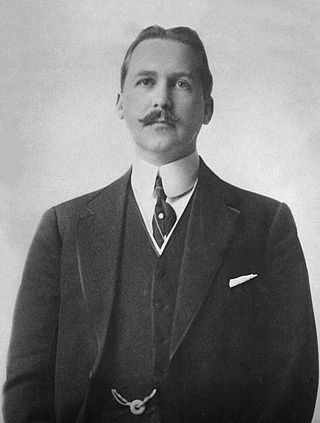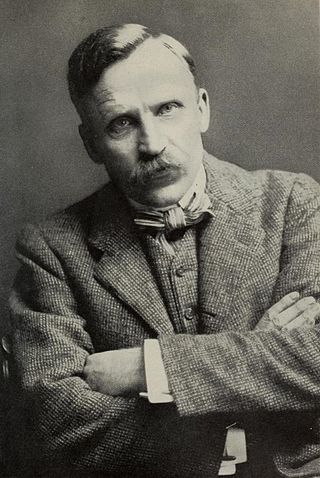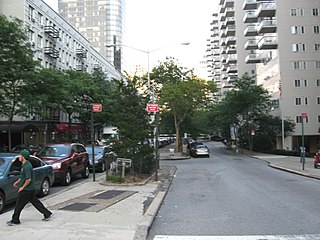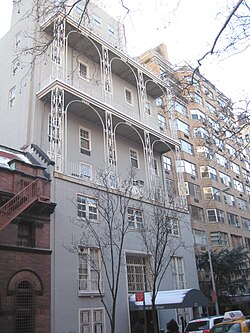
The Museum of Modern Art (MoMA) is an art museum located in Midtown Manhattan, New York City, on 53rd Street between Fifth and Sixth Avenues. The institution was conceived in 1929 by Abby Aldrich Rockefeller, Lillie P. Bliss, and Mary Quinn Sullivan. Initially located in the Heckscher Building on Fifth Avenue, it opened just days after the Wall Street Crash. The museum, America's first devoted exclusively to modern art, was led by A. Conger Goodyear as president and Abby Rockefeller as treasurer, with Alfred H. Barr Jr. as its first director. Under Barr's leadership, the museum's collection rapidly expanded, beginning with an inaugural exhibition of works by European modernists. Despite financial challenges, including opposition from John D. Rockefeller Jr., the museum moved to several temporary locations in its early years, and John D. Rockefeller Jr. eventually donated the land for its permanent site.

Willa Sibert Cather was an American writer known for her novels of life on the Great Plains, including O Pioneers!, The Song of the Lark, and My Ántonia. In 1923, she was awarded the Pulitzer Prize for One of Ours, a novel set during World War I.

Albert Herter was an American painter, illustrator, muralist, and interior designer. He was born in New York City, studied at the Art Students League with James Carroll Beckwith, then in Paris with Jean-Paul Laurens and Fernand Cormon.

Nelson Wilmarth Aldrich was a prominent American politician and a leader of the Republican Party in the United States Senate, where he represented Rhode Island from 1881 to 1911. By the 1890s, he was one of the "Big Four" key Republicans who largely controlled the major decisions of the Senate, along with Orville H. Platt, William B. Allison, and John Coit Spooner. Because of his impact on national politics and central position on the pivotal Senate Finance Committee, he was referred to by the press and public alike as the "general manager of the Nation", dominating tariff and monetary policy in the first decade of the 20th century.

A Lost Lady is a 1923 novel by American writer Willa Cather. It tells the story of Marian Forrester and her husband, Captain Daniel Forrester, who live in the Western town of Sweet Water along the Transcontinental Railroad. Throughout the story, Marian—a wealthy married socialite—is pursued by a variety of suitors and her social decline mirrors the end of the American frontier. The work had a significant influence on F. Scott Fitzgerald's 1925 novel, The Great Gatsby.

Abigail Greene Aldrich Rockefeller was an American socialite and philanthropist. She was a prominent member of the Rockefeller family through her marriage to financier and philanthropist John D. Rockefeller Jr., the son of Standard Oil co-founder John D. Rockefeller Sr. Her father was Nelson W. Aldrich, who served as a Senator from Rhode Island. Rockefeller was known for being the driving force behind the establishment of the Museum of Modern Art. She was the mother of Nelson Rockefeller, who served as the 41st Vice President of the United States.

My Ántonia is a novel published in 1918 by American writer Willa Cather, which is considered one of her best works.

Samuel Sidney McClure was an American publisher who became known as a key figure in investigative, or muckraking, journalism. He co-founded and ran McClure's Magazine from 1893 to 1911, which ran numerous exposées of wrongdoing in business and politics, such as those written by Ida Tarbell, Ray Stannard Baker, and Lincoln Steffens. The magazine ran fiction and nonfiction by the leading writers of the day, including Sarah Orne Jewett, Mark Twain, William Dean Howells, Joel Chandler Harris, Jack London, Stephen Crane, William Allen White and Willa Cather.
The following are the Pulitzer Prizes for 1923.

The Colony Club is a women-only private social club in New York City. Founded in 1903 by Florence Jaffray Harriman, wife of J. Borden Harriman, as the first social club established in New York City by and for women, it was modeled on similar gentlemen's clubs. Today, men are admitted as guests.

66th Street is a crosstown street in the New York City borough of Manhattan with portions on the Upper East Side and Upper West Side connected across Central Park via the 66th Street transverse. West 66th Street is notable for hosting the Lincoln Center for the Performing Arts between Broadway and Columbus Avenue.
"Paul's Case" is a short story by Willa Cather. It was first published in McClure's Magazine in 1905 under the title "Paul's Case: A Study in Temperament", which was later shortened. It also appeared in a collection of Cather's stories, The Troll Garden (1905). For many years "Paul's Case" was the only one of her stories that Cather allowed to be anthologized.

Elizabeth Shepley Sergeant was an American journalist and writer.

Lizzie Plummer Bliss, known as Lillie P. Bliss, was an American art collector and patron. At the beginning of the 20th century, she was one of the leading collectors of modern art in New York. One of the lenders to the landmark Armory Show in 1913, she also contributed to other exhibitions concerned with raising public awareness of modern art. In 1929, she played an essential role in the founding of the Museum of Modern Art. After her death, 150 works of art from her collection served as a foundation to the museum and formed the basis of the in-house collection. These included works by artists such as Paul Cézanne, Georges Seurat, Paul Gauguin, Henri Matisse, Pablo Picasso and Amedeo Modigliani.

Thomas Harlan Ellett was an architect who practiced in New York City.

Augustus J. "Gus" Heege was an American playwright and actor, whose works were popular at the end of the 19th century.

The Life of Mary Baker G. Eddy and the History of Christian Science (1909) is a highly critical account of the life of Mary Baker Eddy, the founder of Christian Science, and the early history of the Christian Science church in 19th-century New England. It was published as a book in November 1909 in New York by Doubleday, Page & Company. The original byline was that of a journalist, Georgine Milmine, but a 1993 printing of the book declared that novelist Willa Cather was the principal author; however, this assessment has been questioned by more recent scholarship which again identifies Milmine as the primary author, although Cather and others did significant editing. Cather herself usually wrote that she did nothing more than standard copy-editing, but sometimes that she was the primary author.
Georgine Milmine Welles Adams best known as Georgine Milmine, was a Canadian-American journalist most known for writing about Mary Baker Eddy, the founder of Christian Science. Milmine, along with Willa Cather and others, worked on 14 investigative articles about Eddy that were published by McClure's in 1907–1908. One of the only major investigative works on Eddy to be published in her lifetime, besides Sibyl Wilbur's Human Life articles, the articles were instigated by Milmine: S. S. McClure purchased her freelance research before assigning a group of reporters to verify, expand and write it up.

The Abby Aldrich Rockefeller Sculpture Garden is an outdoor courtyard at the Museum of Modern Art in Manhattan, New York City. Designed by notable architect Philip Johnson, the courtyard was conceived at the same time as Johnson's West Wing annex for the museum. Construction began in the spring on 1952 and was completed in April 1953.
"The Best Years" is a short story by Willa Cather, first published after her death in the collection The Old Beauty and Others in 1948. It is her final work, and was intended as a gift to her brother, Roscoe Cather, who died as it was being written. Set in Nebraska and the northeastern United States, the story takes place over twenty years, tracing the response of Lesley Ferguesson's family to her death in a snowstorm.




















